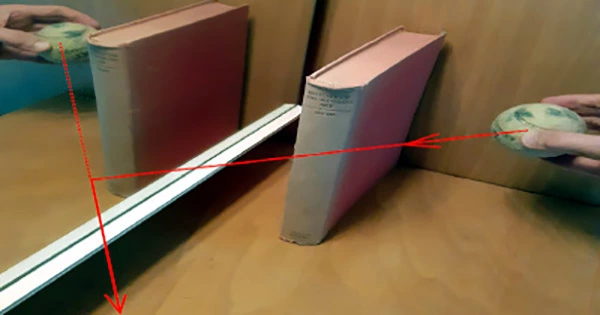On TikTok and other video platforms, an apparently simple but really perplexing mirror experiment has gone viral. Place a piece of paper on top of a mirror and a little object behind it. Even if the object is separated from the mirror by the sheet of paper, it will appear in the mirror as you walk. Baileycaviness12 of TikTok is heard questioning, “How does the mirror know that I’m there?” And that’s simply an opportunity to speak about how strange mirrors are.
Mirrors, despite being common object, can easily break our brains. The first and most obvious error we make is presuming that mirrors flip left and right. We do this because we are a species that evolved through observing others. When we raise our right hand in the mirror, our mirror verse counterpart appears to rise its left – but it’s not actually its left; it’s still the same hand.
A mirror does not genuinely reverse things. When you look at it, don’t believe what your brain says. A mirror, in reality, turns things inside out. Consider gloves that are specifically tailored for each hand. A left-hand glove would fit the right hand if turned inside out, and vice versa. That is exactly what the mirror does: it creates an inside-out picture of the universe.
So, how does this inside-out flip work solve the issue of “How does the mirror know that you’re there?”
Imagine that when you look at anything, straight lines extend from your eyes to every part of the object that you can see. If you looked at yourself, you’d see those rays simply reflecting back at you. It would be like wearing a perfect face mask and then removing it and pushing it outward. Those are the same traits from the inside out.
The magic happens when you move the object behind the paper since you can see the law of reflection in clearer action.
The light is still going straight ahead, but when it hits the mirror, it is reflected back at us at the same angle. This will result in the creation of a virtual picture within the mirror. The image of the object will appear “inside” the mirror as long as there is a path between the object and our eyes that hits the mirror at the same angle.
Mirrors are intriguing things that, despite their “simple” nature, involve some very hard science.
















